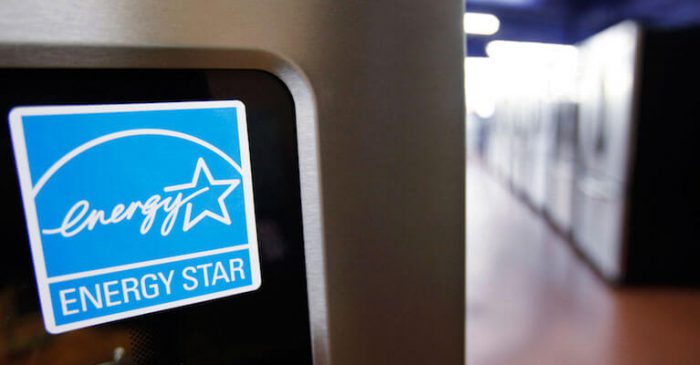Lisa Markowski, ERS, for Zondits
The well-known ENERGY STAR program for labeling energy-efficient products is in jeopardy, as the Trump administration looks to cut it from the budget. This potential elimination joins a growing list of presidential plans that critics say will increase risk to the environment. The Republican president has already pledged to do away with both the Clean Power Plan and the Paris Agreement while increasing oil drilling and opening federal lands to coal mining.
ENERGY STAR operates on a small budget, especially relative to the large amounts it allows consumers to save on their utility bills. Data from the Obama administration states that the international program – which is now also in use in Japan, Australia, Europe, and Taiwan – saved US consumers a total of more than $30 billion in its best year and an estimated total of $430 billion since its inception in 1992.
It is possible that the program may be privatized, although such a move would likely detract from its credibility as a government-backed entity. ENERGY STAR covers both major and small appliances, lighting fixtures, heating and cooling equipment, and electronics. The popular Nest thermostat was recently added to its designated product roster, making it the first programmable thermostat to earn that status.
Also flagged for potential elimination by the new administration are the EPA’s Environmental Justice program, the Diesel Emissions Reduction Act, and more than a dozen emissions-reduction partnerships.
White House could shutter EPA’s Energy Star program
Utility Dive, March 7, 2017
- Among a slew of anticipated changes to energy policy and environmental initiatives, E&E News reports the Trump Administration will move to “close out” the popular Energy Star program, a voluntary labeling initiative for manufacturers of efficient appliances that is maintained through the U.S. Environmental Protection Agency.
- E&E News says a preliminary budget document proposes to slash funding from the program, leaving just $5 million to “close out or transfer” the partnerships involved. According to E&E, a source read portions of a draft of the proposed budget cuts that said: “EPA should begin developing legislative options and associated groundwork for transferring ownership and implementation of Energy Star to a non-governmental entity. … EPA should also explore similar transfer opportunities for the remaining partnership programs as well.”
- The label could continue under different governance, but critics say such a move would lack the credibility and effectiveness of a government-maintained system.
